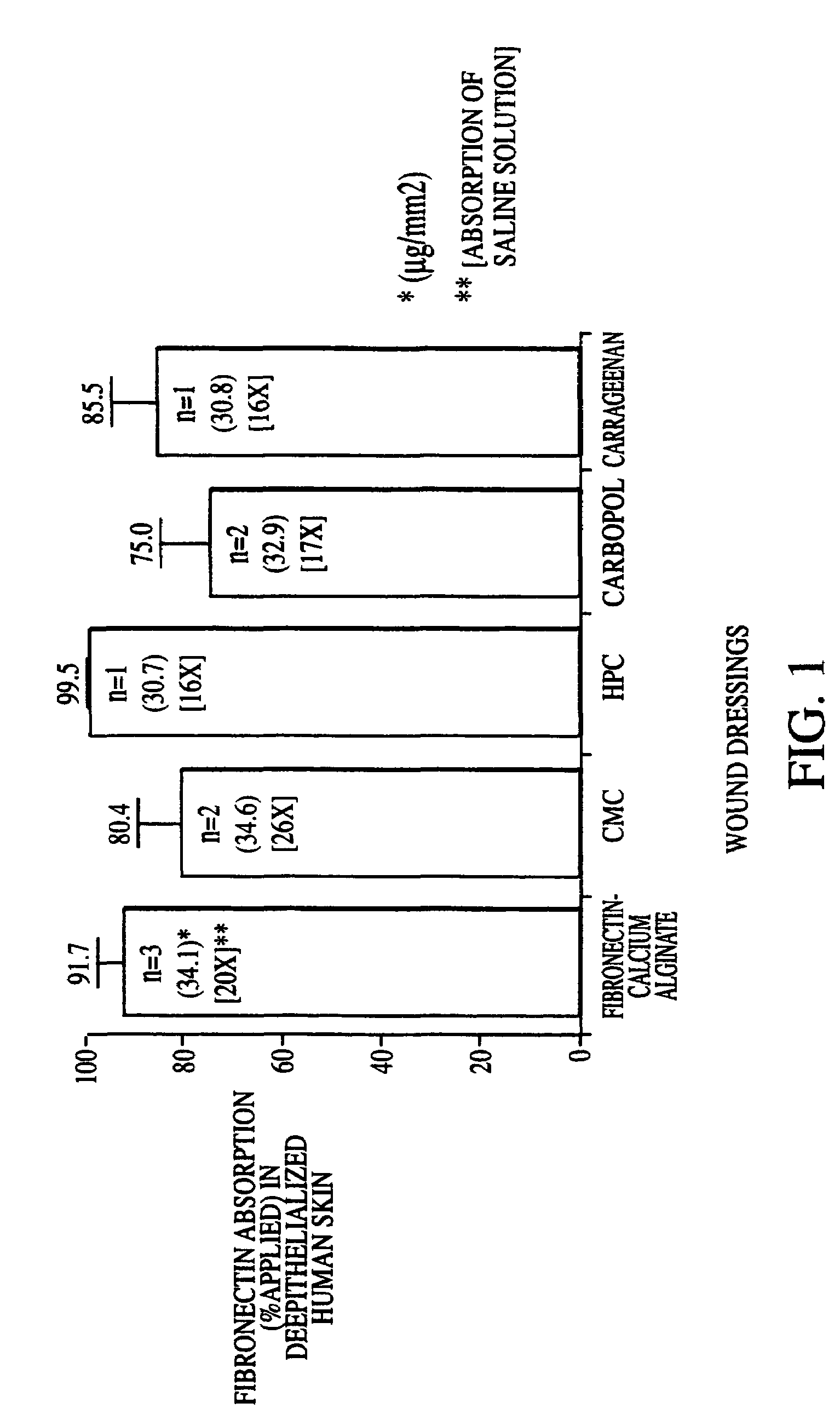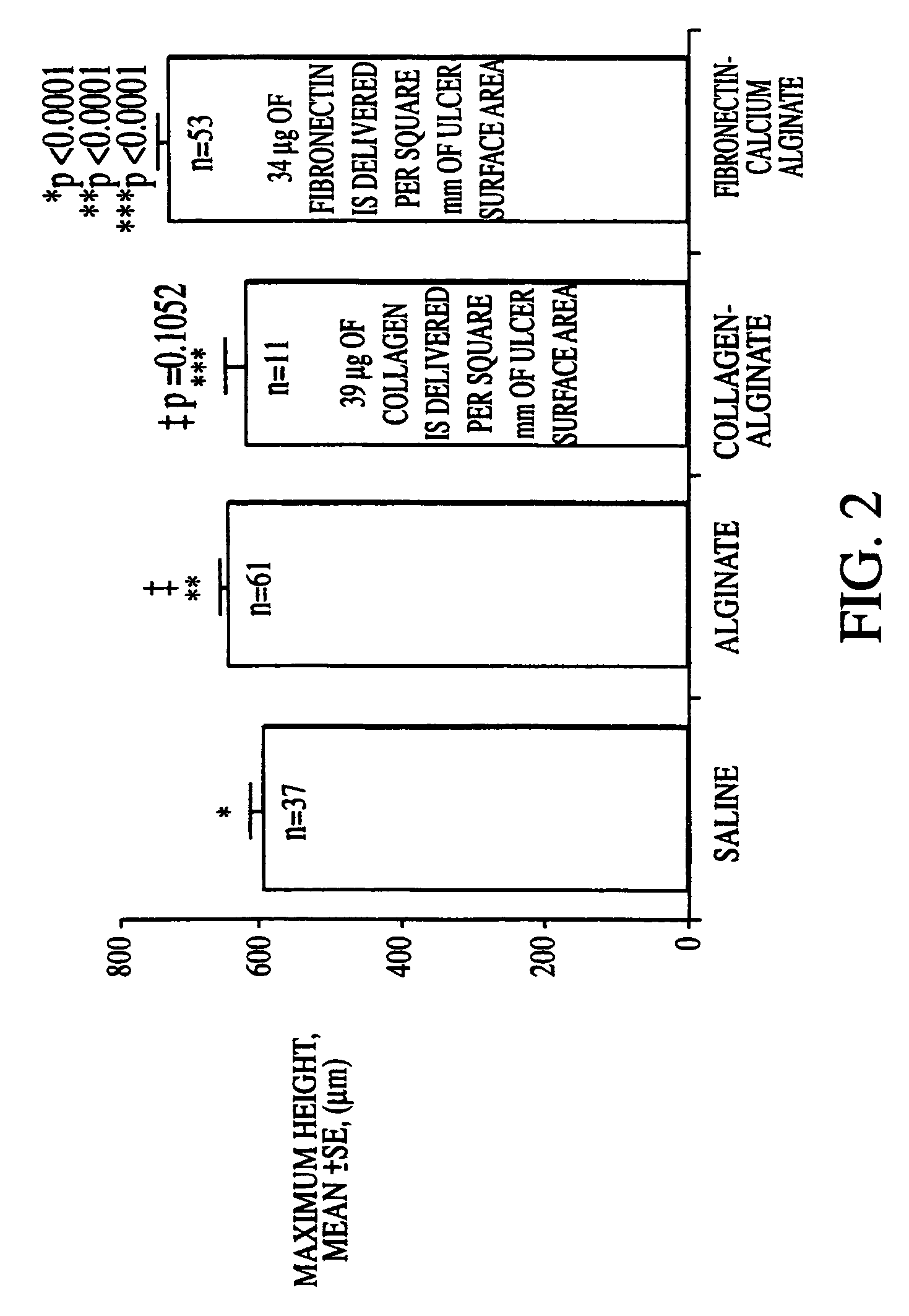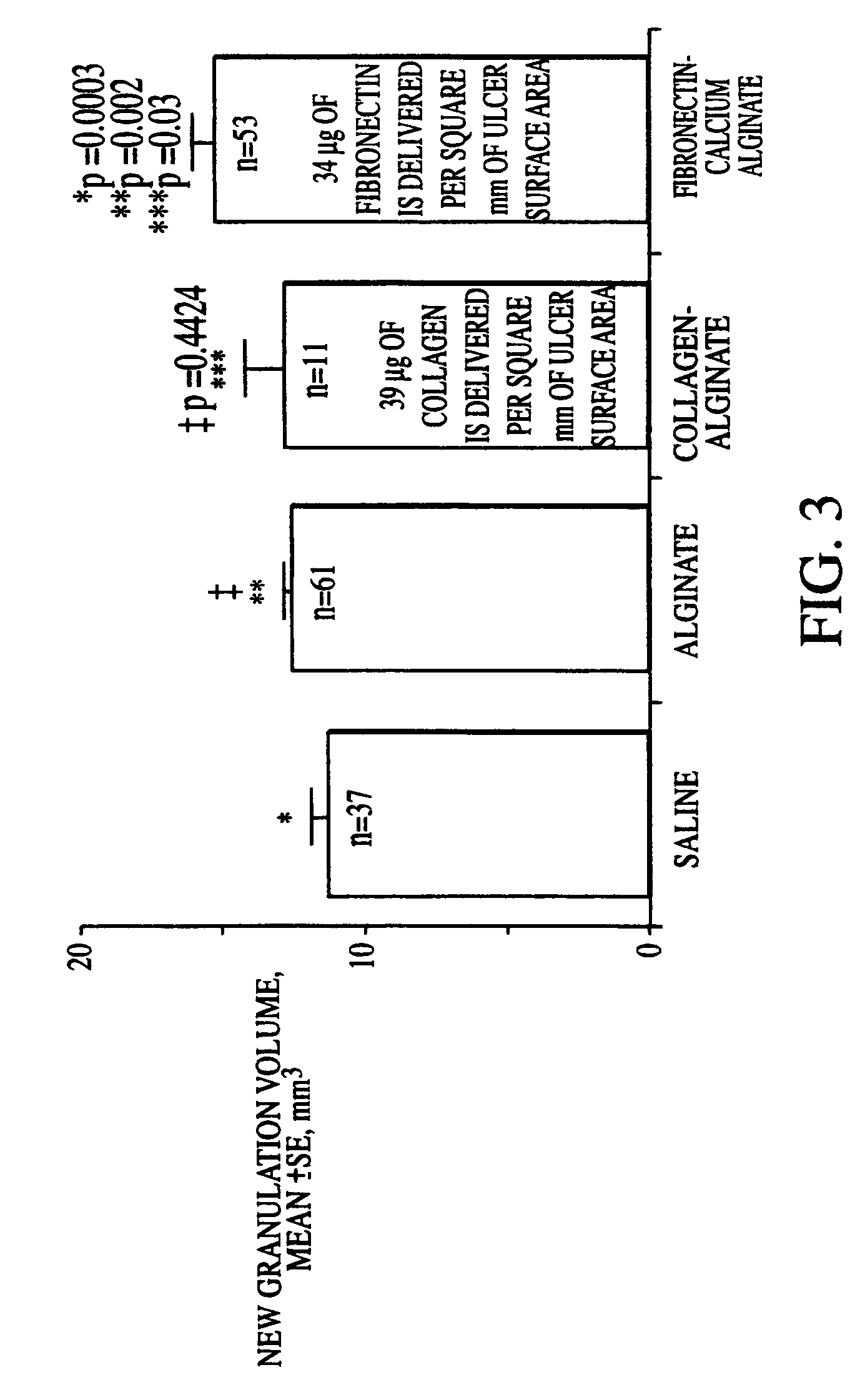Solid wound healing formulations containing fibronectin
- Summary
- Abstract
- Description
- Claims
- Application Information
AI Technical Summary
Benefits of technology
Problems solved by technology
Method used
Image
Examples
example 1
Solid Fibronectin Calcium-Alginate Wound Dressing Formulation
[0025]Alginate salts, as well as the dressing systems described in subsequent examples, can be converted into fibers by a process of freeze-drying. This procedure produces a sponge-like structures with hydrophilic properties. In the presence of fluids, the dressings turn into a gel-like state, capable of absorbing up to 20 times their weight in wound exudate. The fibrous gel thereby creates the desired moist environment for the wound. The dressings can also be removed with a minimal amount of discomfort, minimizes the formation of granulation tissue and does not traumatize epithelial cells during dressing changes.
[0026]The fibronectin-calcium alginate and other fibronectin solid wound dressings according to the invention can store fibronectin without degradation for long periods of time, at least 12 months at 4° C. The residual moisture in these dressing is low, around 5%.
[0027]The fibronectin-calcium alginate and other fi...
example 2
Solid Carboxymethylcellulose (CMC) Dressing
[0037]A preferred grade is GPR® CMC (BDH Laboratories, Ville St-Laurent, Canada). A solid wound dressing containing (w / w) fibronectin 62%, CMC 38% was prepared as follows. CMC powder was first sterilized by using a dry-heat sterilization process at 121° C. for 30 minutes using an American Sterilizer 2020 Vacamtic Eagle series autoclave (Steris Corp., Ohio). 6 grams of CMC were dispersed in 94 mL of demineralized water and mixed with a paddle type stirrer for about 3 hours. This provides a sterile concentrated hydrogel base (6% w / w).
[0038]Separately, 50 mg of lyophilized human plasma fibronectin, prepared according to Example 10, was dissolved in deionized water (5 mL) containing 12 μL of NaOH 3M, for a final pH of 11.6. The solution was maintained at 37° C. until the complete solubilization of fibronectin occurred. This stock solution of fibronectin 10 mg / mL was filtered through a 0.22 μm acetate filter. 3.3 mL of this fibronectin solution ...
example 3
Solid Hydroxypropylcellulose (HPC) Dressing
[0039]Solid hydroxypropylcellulose (HPC) dressing was prepared using the preferred grade of Klucel-HF® HPC (Aqualon, Houston, Tex.). A solid wound dressing containing (w / w) fibronectin 45%, HPC 55% was prepared as follows. HPC powder was first sterilized by using a dry-heat sterilization process at 121° C. for 30 minutes using an American Sterilizer 2020 Vacamtic Eagle series autoclave (Steris Corp., Ohio). HPC (6 g) was then dispersed in 94 mL of deionized water and mixed with a paddle type stirrer for about 3 hours. This provides a sterile, concentrated hydrogel base (6% w / w). Separately, 50 mg of lyophilized human plasma fibronectin, prepared according to Example 10, were dissolved in 5 mL of deionized water containing 12 μL of NaOH 3M, pH 11.6. The solution was maintained at 37° C. until complete solubilization of fibronectin occurred. This stock solution of fibronectin, 10 mg / mL, was filtered through a 0.22 μm acetate filter. 3.3 mL of...
PUM
| Property | Measurement | Unit |
|---|---|---|
| Acidity | aaaaa | aaaaa |
| Acidity | aaaaa | aaaaa |
| Digital information | aaaaa | aaaaa |
Abstract
Description
Claims
Application Information
 Login to View More
Login to View More - R&D
- Intellectual Property
- Life Sciences
- Materials
- Tech Scout
- Unparalleled Data Quality
- Higher Quality Content
- 60% Fewer Hallucinations
Browse by: Latest US Patents, China's latest patents, Technical Efficacy Thesaurus, Application Domain, Technology Topic, Popular Technical Reports.
© 2025 PatSnap. All rights reserved.Legal|Privacy policy|Modern Slavery Act Transparency Statement|Sitemap|About US| Contact US: help@patsnap.com



